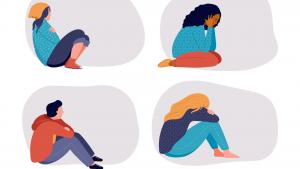Anne Longfield, the Children’s Commissioner for England, is today (Wednesday) publishing a report looking at the amount spent on “low-level” mental health support for children in England. “Low-level” mental health services are preventative and early intervention services for treating problems like anxiety and depression or eating disorders, such as support provided by school nurses or counsellors, drop-in centres or online counselling services. These services are vital for offering early help to children suffering from mental health problems and can often prevent conditions developing into much more serious illnesses.
The Children’s Commissioner’s research is the first time any organisation has collected data to show how much is being spent by areas in England on low level mental health. It reveals that local areas, which included both local authorities and NHS spending, allocated a total of £226 million for low-level mental health services in 2018/19, just over £14 per child.
The report shows there were wide variations between areas in how much funding is available: the top 25% of local areas spent at least £1.1 million or more, while the bottom 25% spent £180,000 or less. This postcode lottery comes at a time when the Government has made more funding available for children’s mental health nationally as the number of children in need of support and treatment from children’s mental health services has increased over the last decade.
While the total reported spend on low-level mental health services across all areas in England increased by 22% between 2016/17 and 2018/19 in cash terms, and by 17% in real terms, over a third of areas around the country still saw a real-terms fall in spending – with nearly 60% of local authorities seeing a real-terms fall. Given the focus on improving access to children’s mental health, these reductions are concerning.
The NHS Long Term plan, published in January, revealed that less than a third of children with a mental health problem are accessing treatment and support. This figure has improved since only a quarter of children were seen in 2015/16, and more money is being spent on children’s mental health services than in the past, with new targets set. In spite of this improvement, many children who currently seek specialist treatment are not receiving it. Today’s report highlights how the rate of improvement is highly variable across the country and the increase in capacity is not keeping pace with increased demand.
The report also shows that where spending has fallen it has often been driven by reduced spending by local authorities. In 2018/19, spending per child was higher in London and the North East but lower in the East Midlands, the East of England and the South East. In London, local authority spending per child on low-level mental health services was £17.88 per child, compared to only £5.32 per child in the East of England.
Anne Longfield, the Children’s Commissioner for England, commenting on today’s report, said:
“This report reveals for the first time the postcode lottery facing the increasing number of children suffering from low-level mental health conditions like anxiety and depression. It is extremely worrying that a third of local areas in England are actually reducing real terms spending on these vital services.
“The children I speak to who are suffering from conditions like anxiety and depression aren’t asking for intensive in-patient therapeutic treatment, they just want to be able to talk to a counsellor about their worries and to be offered advice on how to stop their problems turning into a crisis.
“The NHS Ten Year Plan has made children’s mental health a top priority, but it won’t succeed unless children with low-level mental health problems are offered help quickly and early. Local authorities are under huge financial pressure and many are doing a good job, but those who are spending barely anything on low-level mental health cannot continue to leave children to struggle alone.”






